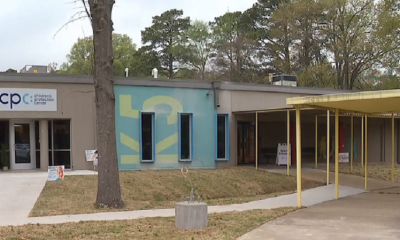Local News
Arkansas Heart begins study of leadless pacemaker system

Little Rock, Arkansas – Arkansas Heart Hospital is the first hospital in the state to participate in a study of a leadless pacemaker system.
The study will assess the safety and effectiveness of this new type of pacemaker, used to treat patients with an abnormal heart rhythm.
“We are honored to be the first hospital in Arkansas to participate in the Aveir DR 121 IDE study,” Dr. Bruce Murphy, Arkansas Heart Hospital CEO said. “This innovative technology is a game-changer in the practice of cardiology, and we are thrilled to offer it to our patients. Our robust clinical research department has a superior track record in terms of our studies’ volume and efficacy. Because of this, we can participate in studies other providers can’t, which gives our patients access to the most leading-edge technologies before market release.”
Convention pacemakers are generally implanted near the left shoulder below the collarbone, with insulated wire leads transmitting its electrical pulse signal to the heart. After the wires are implanted a patient has to be careful about raising their arm or twisting while the implant incisions heal, generally a six-week process. The leadless device being tested, the Abbott Aveir DR Leadless Pacemaker System, would shorten the recovery time since the device is implanted directly into the heart without the use of leads in a much less invasive catheter procedure. “As cardiologists, we’ve been waiting on this type of technology for such a long time, and we are thrilled to be the first to offer it to patients across the state,” Dr. Monica Lo, electrophysiologist at Arkansas Heart Hospital and primary investigator on hospital’s study said.
“In addition to the reduced maintenance over the patient’s lifetime, this technology is especially exciting because of the minimally invasive procedure. By going through the groin, we can reduce recovery time from six weeks to only one. Patients can now return to regular life within one week, which is a phenomenal benefit both physically and emotionally, ” she said.
As part of the leadless system, the two components implanted in the heart, one atrial and one ventricular, communicate wirelessly in order to synchronize or coordinate heart pacing based upon patient needs.
Battery life is expected to be comparable with conventional, leaded, pacemakers.
The leadless system is not yet commercially available, and it is a part of a larger global study.
-

 Local News2 weeks ago
Local News2 weeks agoHikers protesting new ‘Beetlejuice’-like sculptures in Pinnacle Mountain State Park
-

 Local News2 weeks ago
Local News2 weeks agoArkansas law enforcement raises awareness to prevent distracted driving
-

 Local News2 weeks ago
Local News2 weeks agoSecond Child Abuse Center opens in Jacksonville
-

 Local News2 weeks ago
Local News2 weeks agoEmergency management personnel get ready for possible extreme weather on eclipse day
-

 Local News2 weeks ago
Local News2 weeks agoReservations are full in Northeast Arkansas for the weekend before Eclipse
-

 Local News2 weeks ago
Local News2 weeks agoSaline County issued a Low Water Alert for Forest Service Road 114
-

 Local News2 weeks ago
Local News2 weeks agoJust before the total solar eclipse, Governor Sanders releases $100,000 from the Response and Recovery Fund
-

 Local News2 weeks ago
Local News2 weeks agoBefore the total solar eclipse, ARDOT provides an update on the development of Interstate 30






Leave a Reply